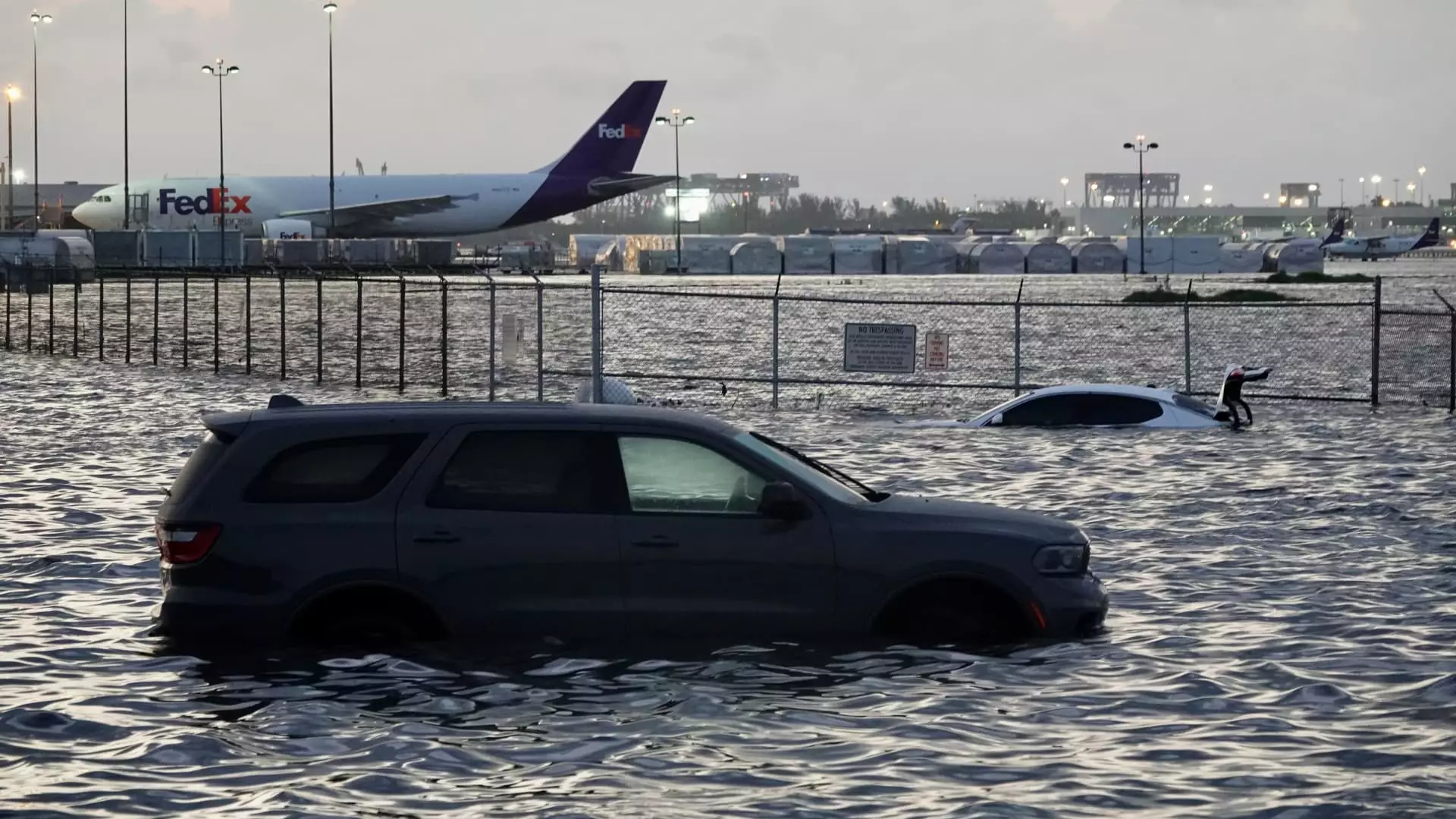In the face of mounting climate challenges, U.S. infrastructure reveals its glaring vulnerabilities more starkly than ever before. For decades, America’s roads, bridges, airports, and critical utilities have been constructed with little regard for the unpredictable extremes that climate change now unleashes. As a result, our infrastructure, once viewed as a testament to progress and innovation, now teeters on the brink of disaster, illustrating a stark disconnect between planning and the relentless reality of a warming planet.
Recent events serve as brutal reminders of these deficiencies. Flooded runways at Fort Lauderdale and a stuck-open bridge in New York exemplify the immediate impacts of climate misjudgments. These incidents are not isolated; they reflect a systemic failure rooted in outdated designs and neglect of future-proofing. Our infrastructure was built to withstand weather patterns that are rapidly becoming obsolete, leaving us exposed to unpredictable disasters that threaten public safety and economic stability.
Science, Once a Guiding Light, Under Siege
The backbone of any resilient infrastructure lies in sound scientific data, yet this foundation is increasingly under attack. Under previous administrations, agencies such as NOAA and FEMA faced significant cuts, hindering their capacity to accurately assess and respond to climate risks. The science that could inform smarter, more resilient infrastructure decisions is now less accessible, more contested, and often dismissed.
This politicization of climate science accelerates the deterioration of infrastructure planning. Without reliable data, engineers are forced to operate in a fog of uncertainty, designing structures that are ill-prepared for a future characterized by more frequent and severe weather events. In this vacuum, investments risk becoming gambles, with taxpayers ultimately footing the bill for miscalculations rooted in science denial and policy neglect.
Financial Shortfalls Threaten Our Future
Addressing the climate threat to infrastructure requires substantial investment—an amount that current projections indicate is sorely lacking. The American Society of Civil Engineers warns that a staggering $3.7 trillion in federal spending will be necessary over the next decade simply to bring the nation’s infrastructure up to a minimally acceptable state. Yet, political reluctance and shifting priorities have resulted in significant budget cuts.
Initiatives like FEMA’s Building Resilient Infrastructure and Communities program, intended to reinforce our defenses against natural calamities, have faced cancellations, fueling the cycle of neglect. Such setbacks are not only shortsighted—they threaten to deepen the very vulnerabilities that climate change exploits so readily. Repairing these gaps will demand not just money but strategic foresight, anchored in both science and political will.
Market’s Rising Anxiety and the Need for Urgent Reform
The financial sector is increasingly aware that climate risks are not far-off threats but present-day challenges that could destabilize investments. Climate-conscious investors, banks, and insurers are asking hard questions—how should infrastructure be financed, insured, and constructed to withstand the new normal? The answers—or lack thereof—are revealing a sector unprepared for the scale of change required.
Confidence in the resilience of investment portfolios hinges on clear, science-backed data. Yet, with information streams squeezed or politicized, investors are left to navigate perilous waters without a reliable compass. This can mean higher insurance premiums, higher costs for infrastructure projects, and ultimately, a slower pace of critical upgrades. If the public and private sectors do not rally swiftly, the infrastructure gap—already staggering—will morph into a chasm from which recovery becomes even more arduous.
A Call for Practical Political Action
Resilience doesn’t just depend on scientific understanding or market forces—it requires decisive political action. However, the current environment is marred by short-term thinking, with administrations more invested in ideological battles than in long-term infrastructure security. The rollback of climate-related initiatives symbolized a dangerous retreat from scientific consensus and strategic planning.
Moving forward, a pragmatic, center-right approach must reconcile economic vitality with climate adaptation. This entails rethinking infrastructure design, increasing investments, and ensuring that policies are firmly rooted in science rather than ideology. If America’s leaders continue to ignore the warnings, we risk a future where our crumbling infrastructure becomes a symbol of preventable catastrophe rather than resilience and progress.

